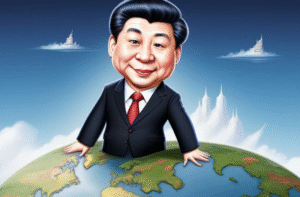$NVDA
#ChamathPalihapitiya #Nvidia #Huawei #TechWar #USChinaTensions #TechIndependence #LowEndDisruptor #MarketStrategy #TechGiants #SiliconValley #StockMarket #InvestmentTrends
Chamath Palihapitiya, the influential tech investor and venture capitalist, has recently shed light on a significant shift in the global tech landscape, particularly highlighting the challenge posed by Chinese tech behemoth Huawei to Western technology giants, with Nvidia being identified as the latest target. This move comes as part of China’s broader effort to accelerate its pursuit of tech independence, especially in the backdrop of escalating tensions between the U.S. and China. Palihapitiya points out that Huawei’s strategy is to employ a “low-end disruptor” approach, which has historically enabled the company to undermine and outcompete entrenched players in the tech industry, thereby reshaping market dynamics and asserting its presence on the global stage.
The crux of Huawei’s strategy, as explained by Palihapitiya, hinges on leveraging comparatively budget-friendly but high-performance technologies to capture market share from competitors that typically cater to higher-end segments. This tactical shift is not only to carve out a significant niche within the fiercely competitive tech market but also to challenge and potentially surpass the technological advancements and market dominance of firms like Nvidia, known for their cutting-edge graphics processing units (GPUs) and deep learning technologies. It’s a bold gambit, reflective of Huawei’s aspirations to become a “national champion” in technology, amid a strategic decoupling and technological bifurcation driven by geopolitical frictions.
This development is particularly noteworthy given Nvidia’s prominence and critical role in various high-stakes tech sectors, including artificial intelligence (AI), gaming, and autonomous vehicles. Nvidia’s GPUs have become foundational to the AI revolution, powering everything from data centers to edge computing devices. A successful disruption by Huawei could not only alter market shares but potentially catalyze shifts in global tech supply chains, AI development trajectories, and competitive strategies across the tech ecosystem. Against the backdrop of these potential shifts, investors and stakeholders in the tech industry are closely monitoring developments, assessing the implications for market dynamics, and recalibrating investment strategies accordingly.
Given the broader context of U.S.-China relations and the ongoing recalibration of global tech supply chains, the confrontation between Huawei and Nvidia can be seen as a microcosm of the larger strategic competition for technological supremacy. As nations and companies alike navigate through this complex terrain, the insights provided by figures like Palihapitiya offer valuable perspectives on the evolving landscape. Whether Huawei’s low-end disruptor strategy will achieve its intended objectives remains to be seen, but its challenge to Nvidia underscores a pivotal moment in the global tech narrative, signaling shifts that could have long-lasting implications for the industry and for geopolitical relations at large.











Comments are closed.